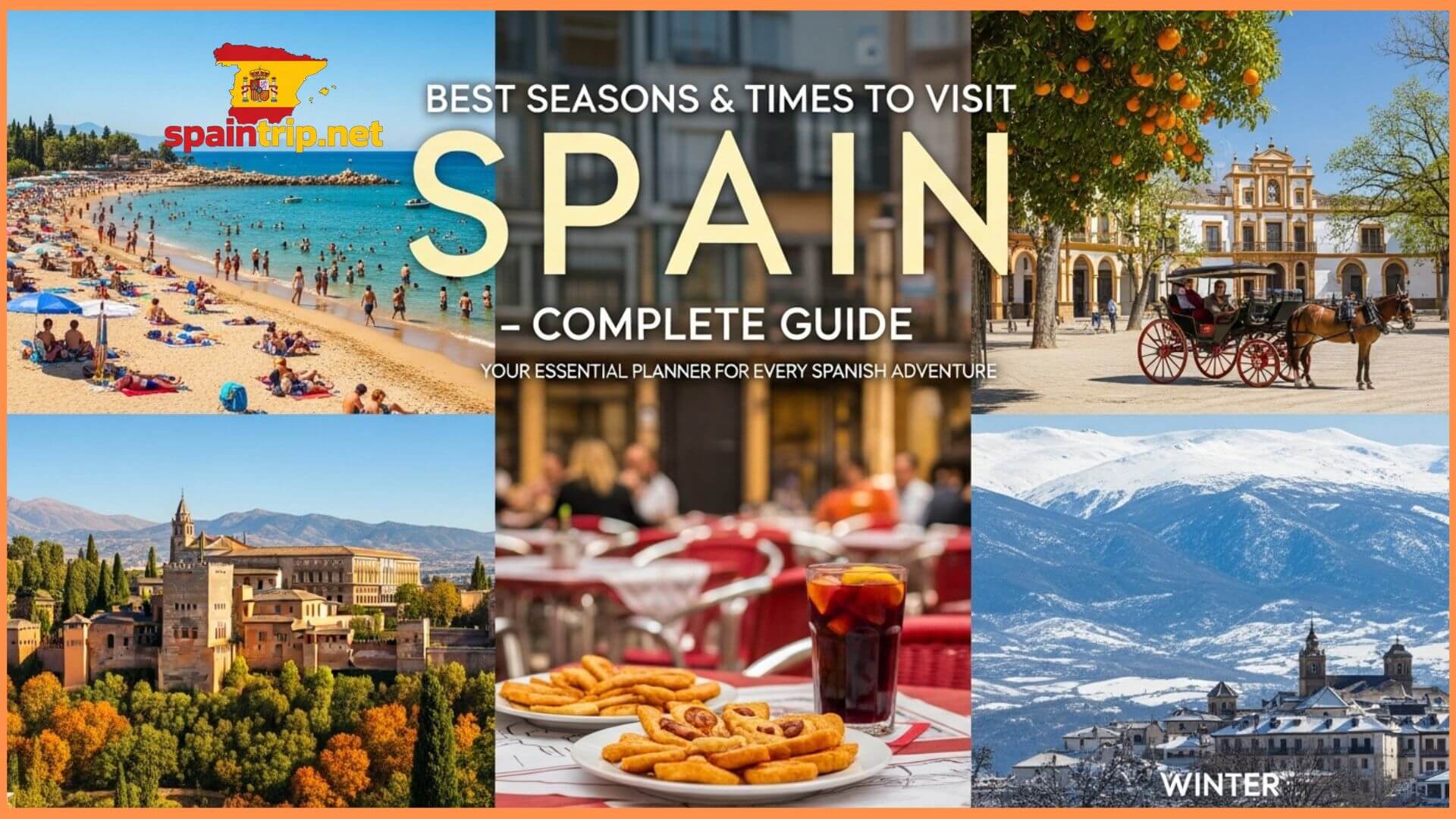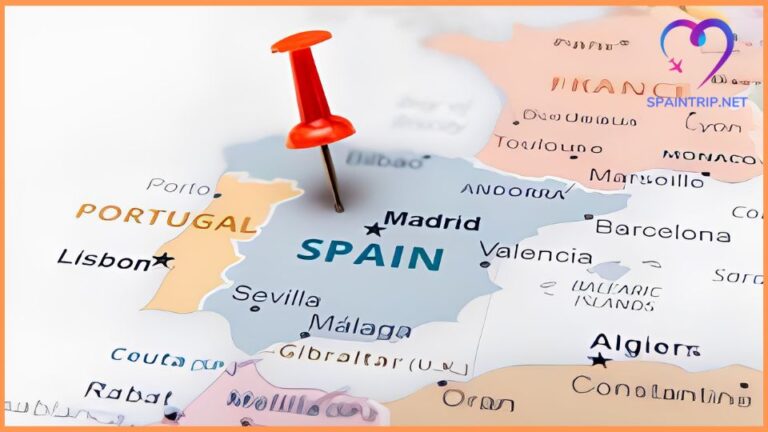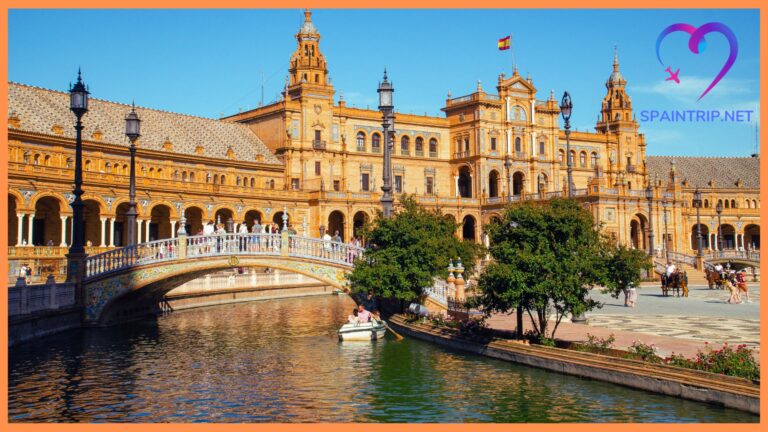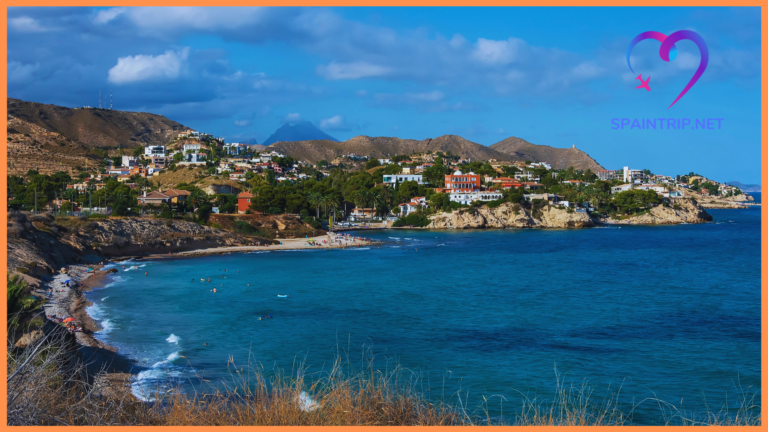Best Seasons & Times to Visit Spain – Complete Guide
Are you considering a trip to Spain? Good for you! However, making the inquiry of “what’s the best time to visit Spain” is akin to asking “what’s the best flavor of ice cream?” The answer depends entirely on what you’re looking for.
Spain’s got year-round appeal, but if you want the short answer: late spring (April-May) and early autumn (September-October) are absolutely golden. You’ll get gorgeous weather, fewer crowds than summer, and prices that won’t make your wallet cry. But honestly, there’s magic to be found in every season if you know where to look.
The trick is matching your timing with what you actually want to do. Beach bum? Summer’s your jam. Culture vulture who melts in heat? Spring and fall are perfect. Skiing enthusiast? Winter’s calling your name. Let me break it all down for you.
Spain’s Climate & Regional Variations
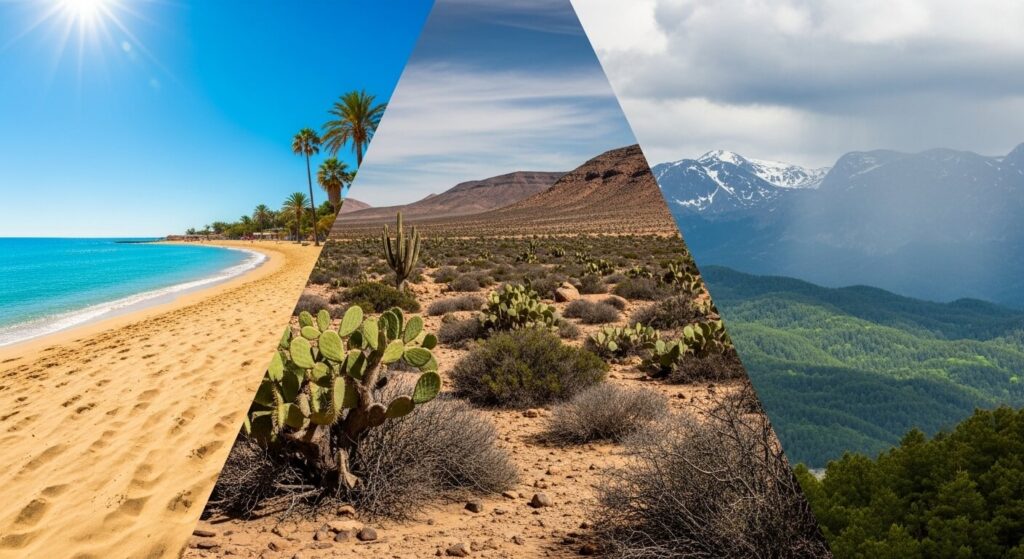
Here’s what makes timing tricky in Spain – this country’s got more climate zones than you can shake a sangria glass at. The Mediterranean coast is basically paradise with mild winters and warm summers. The Atlantic north (think Galicia and Basque Country) is greener and rainier – like Spain’s moody, artistic cousin. The central plateau around Madrid gets scorching hot in summer and surprisingly cold in winter.
Then you’ve got the Canary Islands off Africa’s coast, which are basically eternal spring, and the Balearics in the Mediterranean that are perfect for island hopping. Altitude matters too – Granada might be sunny, but the nearby Sierra Nevada mountains could be snowy on the same day.
Season-by-Season Breakdown
Spring (March–May)
Spring in Spain is absolutely magical. We’re talking perfect temperatures (60-75°F), wildflowers everywhere, and that amazing light that makes everything look like a painting. This is hands-down the best time for cities like Madrid, Seville, and Granada – you can actually walk around without melting.
What’s happening: Semana Santa (Holy Week) brings incredible processions, especially in Seville. The Feria de Abril in Seville is pure Andalusian magic with flamenco, horses, and amazing food. Orange trees are blooming, and the countryside is ridiculously photogenic.
The good: Perfect weather, fewer crowds than summer, reasonable prices.
The catch: Easter week gets crazy busy and expensive, especially in southern cities. Book early if you’re planning around Semana Santa.
Summer (June–August)
Summer’s when Spain really comes alive, especially along the coasts. The Mediterranean beaches are perfect, the Balearic Islands are absolutely stunning, and the nightlife is legendary. But fair warning – inland cities like Madrid, Seville, and Córdoba turn into actual ovens.
Festival central: San Fermín in Pamplona (July), La Tomatina in Buñol (August), and countless music festivals. The energy is infectious, and you’ll understand why Spaniards have perfected the art of the siesta.
The good: Beach season, amazing festivals, long daylight hours, incredible nightlife.
The reality check: Crowds, high prices, and heat that’ll make you question your life choices in cities like Seville (we’re talking 100°F+).
Pro tip: If you’re doing cities in summer, plan indoor activities for afternoon and save sightseeing for early morning or evening.
Autumn (September–November)
This might be my favorite time to visit Spain. September still has warm beach weather but without the crazy crowds. October’s perfect for pretty much everything – cities, hiking, wine country. The light is incredible, and you’ll catch harvest season in places like La Rioja.
What’s special: Wine harvest season, La Mercè festival in Barcelona (September), perfect hiking weather in the Pyrenees, and those gorgeous autumn colors in northern Spain.
The good: Comfortable temperatures, fewer tourists, better prices, grape harvest season.
The downside: Occasional rain in the north, and beach season starts winding down by November.
Winter (December–February)
Winter in Spain is way more diverse than people realize. The south stays mild and sunny – Andalusia and the Canary Islands are perfect for escaping cold elsewhere. The Pyrenees and Sierra Nevada offer solid skiing, and Christmas markets in Madrid are lovely.
Hidden gems: The Canary Islands are basically 70°F year-round. Seville in January? Perfectly pleasant. Plus, you’ll have major attractions to yourself and pay way less for everything.
The trade-off: Shorter daylight hours, cooler weather (though rarely truly cold except in the mountains), and some coastal restaurants close for the season.
Best Times by Travel Interest
Beach Vacations
June–September for the Mediterranean coast and Balearic Islands. July-August are hottest but most lively. For year-round beach vibes, the Canary Islands are your friend.
Cultural City Trips
April–June and September–October are perfect. You can actually enjoy walking around Madrid, Barcelona, Seville, and Granada without wilting. The light’s amazing for photography too.
Food & Wine Lovers
September–November is harvest season – perfect for La Rioja wine tours, trying seasonal dishes, and enjoying outdoor dining before it gets too cold.
Outdoor Adventures & Hiking
Late spring (April-May) and early autumn (September-October) offer perfect temperatures for the Camino de Santiago, Pyrenees hiking, or exploring Picos de Europa.
Skiing/Snowboarding
December–March in the Pyrenees or Sierra Nevada. Spain’s ski scene is surprisingly good and way less crowded than the Alps.
Major Festivals & Events Calendar
March: Las Fallas (Valencia), Semana Santa (nationwide)
April: Feria de Abril (Seville)
July: San Fermín (Pamplona)
August: La Tomatina (Buñol), Edinburgh Festival alternative in various cities
September: La Mercè (Barcelona), harvest festivals
December: Christmas markets, Three Kings celebrations
Festival tip: Book accommodation the second you decide on a festival trip. Prices can triple, and availability disappears fast.
Money-Saving & Planning Tips
Shoulder season magic: April-May and September-October give you great weather without peak prices. You’ll save 30-50% on hotels and flights.
Flight timing: Book 2-3 months ahead for best prices. Tuesday-Thursday flights are usually cheaper than weekends.
Packing smart: Spain’s weather can surprise you. Pack layers, even in summer (air conditioning can be aggressive). Spring and fall need a light jacket for evenings.
Regional timing: Hit the north (Basque Country, Galicia) in summer when it’s pleasant, and save the south for spring, fall, or winter.
Suggested Itineraries by Season
Spring Adventure (7-10 days)
Madrid (2-3 days) → Seville (2-3 days) → Granada (2 days) → Barcelona (2-3 days)
Perfect weather for city hopping and sightseeing.
Summer Coastal (7-10 days)
Barcelona (3 days) → Valencia (2 days) → Ibiza/Mallorca (3-4 days) → Madrid (1-2 days)
Beach time with cultural stops.
Autumn Cultural (7-10 days)
Madrid (2 days) → La Rioja wine region (2 days) → Bilbao/San Sebastián (2 days) → Barcelona (2-3 days)
Perfect for food, wine, and comfortable sightseeing.
Winter Escape (7-10 days)
Seville (3 days) → Canary Islands (4-5 days) → Madrid (2 days)
Warm weather and cultural highlights.
Here’s the truth – there’s no single “perfect” time to visit Spain because this country’s got something amazing happening year-round. The key is being honest about what you want from your trip.
Want to party on beaches and experience legendary nightlife? Summer’s your season, just be ready for crowds and heat. Prefer comfortable sightseeing and amazing light for photos? Spring and fall are golden. Looking for deals and don’t mind cooler weather? Winter in the south is surprisingly lovely.
My personal sweet spot? September and October, or April and May. You get the best of everything – great weather, manageable crowds, reasonable prices, and those perfect golden hour moments that make you fall in love with Spain.
Whatever you choose, you’re gonna have an incredible time. Spain doesn’t do anything halfway, and that includes making visitors feel welcome no matter when you show up.
FAQ
Is Spain too hot in summer?
Coastal areas and islands are fine, but inland cities like Madrid and Seville can hit 100°F+. Plan accordingly with indoor activities during peak afternoon heat.
What’s the rainiest season in Spain?
Late fall and early winter, especially in northern regions. Southern Spain stays pretty dry year-round.
When are flights to Spain cheapest?
Generally January-March and November (avoiding Christmas), with Tuesday-Thursday departures offering better deals.
Is October a good time to visit Spain?
October is fantastic – warm days, cool evenings, fewer crowds, and still swimmable sea temperatures in many areas.
Do I need to book hotels early for Spanish festivals?
Absolutely. Major festivals can triple accommodation prices and sell out months ahead. Plan as early as possible for events like San Fermín or Semana Santa.

